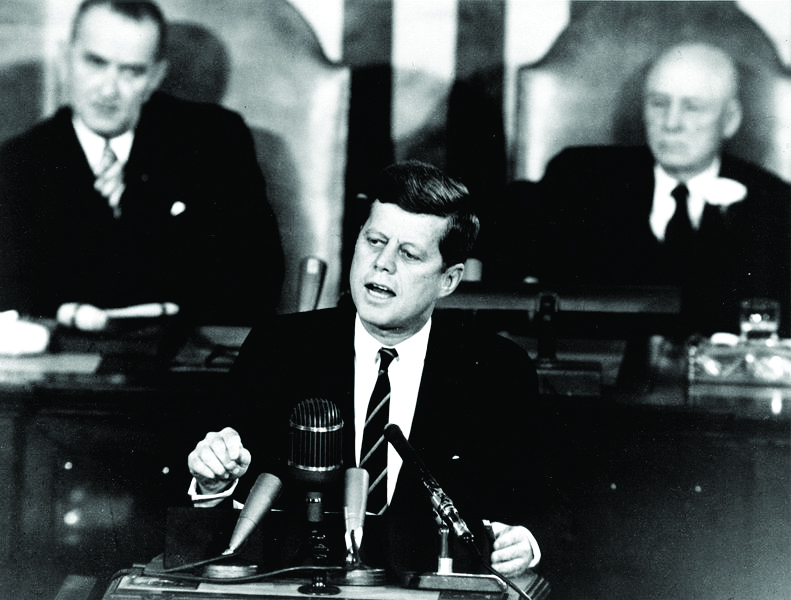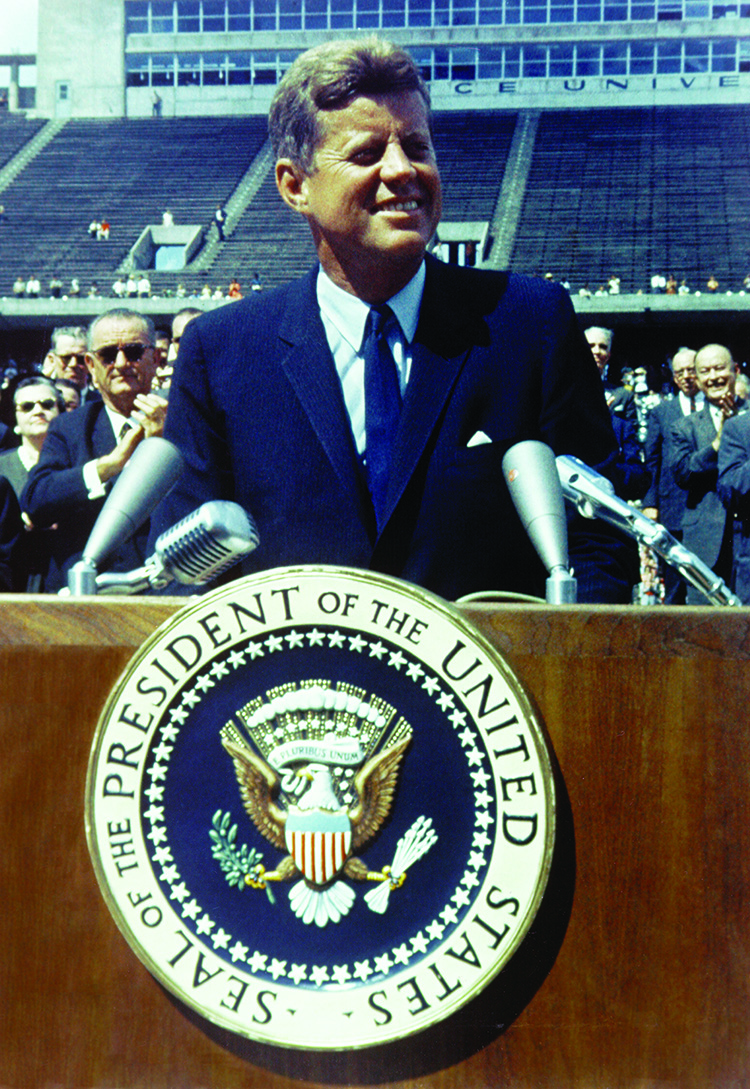Kennedy killer shrouded in mystery 50 years later
DANIEL DURBIN
THE SIGNAL
It was a warm, sunny morning in Dallas when our youngest president, John Fitzgerald Kennedy, and his motorcade cruised at a pace of 11 miles-per-hour through the downtown area Nov. 22, 1963.
The streets were crowded with thousands of excited citizens who hoped to get a glimpse of the president and first lady Jackie Kennedy as they waved from the presidential blue 1961 Lincoln convertible.
The motorcade, which was en route to a luncheon where JFK was scheduled to speak to business and civic leaders in an effort to promote his re-election campaign, never made it to its destination.
Three shots rang out seconds after turning onto Elm Street. Our 35th president was dead.
Fifty years have now passed since John F. Kennedy was shot and killed. Although the government officially announced through the Warren Commission that Lee Harvey Oswald was the lone assassin, many Americans refuse to believe he was solely responsible for one of the most notorious acts in American history. The result has been hundreds of conspiracy theories over the years regarding who really killed Kennedy.
“Basically, JFK had created enough enemies by 1963 that there was a perfect storm of criminal and institutional elements that wanted him dead,” said Tim Silver, author and operator of ThePeoplesHistory.net, a blog site that addresses and investigates the American government’s hidden agendas. “A few specific groups had the means to do it as well.”
The most common conspiracy theory is that there was a second shooter hidden in the grassy knoll located in front of the motorcade. Multiple witnesses that day claim shots were fired from the grassy knoll, an opportune spot for a sniper to hide.
Lee Harvey Oswald allegedly shot Kennedy from the sixth floor of the Texas School Book Depository, which was behind the motorcade.
Those who have seen the infamous video footage of JFK being shot witnessed a bullet crashing through the front of his head, which sent a bloody mist showering behind him and jerking his head backward. Silver and other theorists argue that if Oswald did in fact shoot Kennedy from the depository, his head would have fallen forward, and his blood would have sprayed the opposite direction.
Many theorists believe Jack Ruby, the Dallas nightclub owner who killed Oswald at the Dallas Police Department while police were transferring him to the county jail, was involved.
Ruby was rumored to have affiliations with the mafia, which had its own motives for killing the president.
“Even if it wasn’t the mafia that ordered the hit, it was likely them that pulled it off,” Silver said.
Another popular theory is that CIA operatives were responsible for killing the president.
Kennedy’s popularity with the CIA plummeted after the failed Bay of Pigs mission, which was a ground assault in Cuba led by the CIA as an attempt to overthrow Fidel Castro’s communist government.
Kennedy neglected to send air support after Castro’s army overwhelmed and outnumbered the deployed troops, which angered members in the agency.
JFK also refused to release false information about Cuba that was presented by the CIA in order to campaign war efforts. The president instead fired leaders of the CIA for attempting to orchestrate such an attempt.
The most controversial – and troubling – theory can be found in Roger Stone’s book, “The Man Who Killed Kennedy.” In it, Stone determines that Kennedy’s own vice president, Lyndon B. Johnson, was the mastermind behind the assassination.
Prior to the assassination, Johnson and Kennedy were known to strongly dislike one another. The Vice President, a Texas native, was allegedly involved in a number of political bribery scandals that were emerging into the public’s eye through the media, the consequences of which could have landed Johnson in prison.
Robert Kennedy, JFK’s brother and acting U.S. Attorney General, wanted LBJ off the 1964 re-election ballot. With his political career potentially in shambles, Stone claims, Johnson had the most to gain in the wake of Kennedy’s death.
Despite all the theories circulating throughout books, articles and the Internet, some experts still rely on the proven evidence to construct their conclusions.
Sean Cunningham, an American history professor at Texas Tech University who has conducted extensive research on the Kennedy assassination, claims people build on conspiracy theories because they are sometimes easier to believe than the truth.
“Conspiracy theories – whether those involving JFK or some other ‘unsolved mystery’ – are often strangely comforting to Americans, particularly among those unwilling to accept the fact that momentous, world-changing events can come as a result of random, isolated acts of violence, perpetrated by relatively insignificant individuals,” Cunningham said.
After 50 years, it seems the general public is still unsure of what to believe. It may take another 50 years before the American public can fully agree on a conclusion, but then again, the mystery behind the assassination of John Fitzgerald Kennedy may live on as the most prolific cold case in American history, and no amount of evidence – no matter how concrete – will ever be enough to satisfy the entire public’s opinion.


